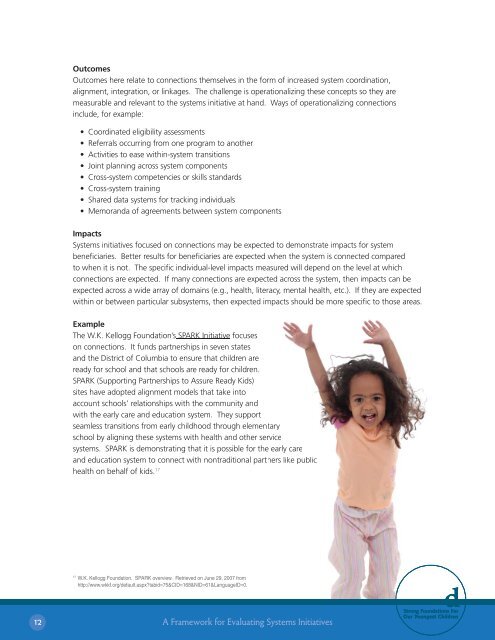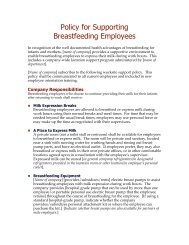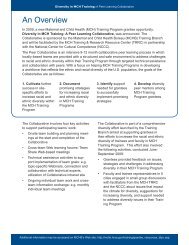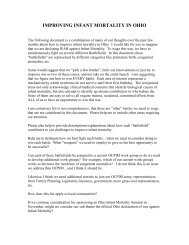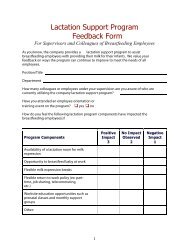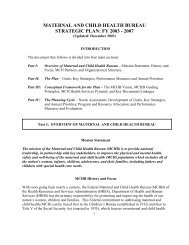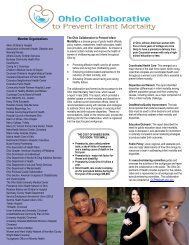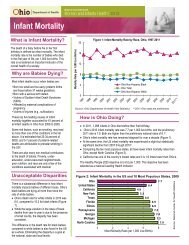A Framework for Evaluating Systems Initiatives
A Framework for Evaluating Systems Initiatives
A Framework for Evaluating Systems Initiatives
- No tags were found...
Create successful ePaper yourself
Turn your PDF publications into a flip-book with our unique Google optimized e-Paper software.
OutcomesOutcomes here relate to connections themselves in the <strong>for</strong>m of increased system coordination,alignment, integration, or linkages. The challenge is operationalizing these concepts so they aremeasurable and relevant to the systems initiative at hand. Ways of operationalizing connectionsinclude, <strong>for</strong> example:• Coordinated eligibility assessments• Referrals occurring from one program to another• Activities to ease within-system transitions• Joint planning across system components• Cross-system competencies or skills standards• Cross-system training• Shared data systems <strong>for</strong> tracking individuals• Memoranda of agreements between system componentsImpacts<strong>Systems</strong> initiatives focused on connections may be expected to demonstrate impacts <strong>for</strong> systembeneficiaries. Better results <strong>for</strong> beneficiaries are expected when the system is connected comparedto when it is not. The specific individual-level impacts measured will depend on the level at whichconnections are expected. If many connections are expected across the system, then impacts can beexpected across a wide array of domains (e.g., health, literacy, mental health, etc.). If they are expectedwithin or between particular subsystems, then expected impacts should be more specific to those areas.ExampleThe W.K. Kellogg Foundation’s SPARK Initiative focuseson connections. It funds partnerships in seven statesand the District of Columbia to ensure that children areready <strong>for</strong> school and that schools are ready <strong>for</strong> children.SPARK (Supporting Partnerships to Assure Ready Kids)sites have adopted alignment models that take intoaccount schools’ relationships with the community andwith the early care and education system. They supportseamless transitions from early childhood through elemenschool by aligning these systems with health and other sersystems. SPARK is demonstrating that it is possible <strong>for</strong> theand education system to connect with nontraditional parthealth on behalf of kids. 1717W.K. Kellogg Foundation. SPARK overview. Retrieved on June 29, 2007 fromhttp://www.wkkf.org/default.aspx?tabid=75&CID=168&NID=61&LanguageID=0.12A <strong>Framework</strong> <strong>for</strong> <strong>Evaluating</strong> <strong>Systems</strong> <strong>Initiatives</strong>


